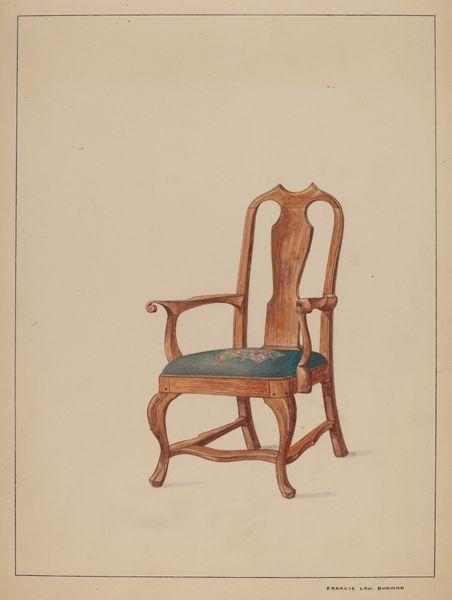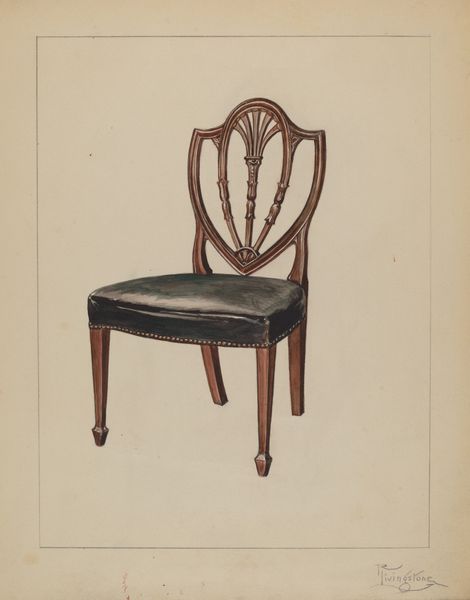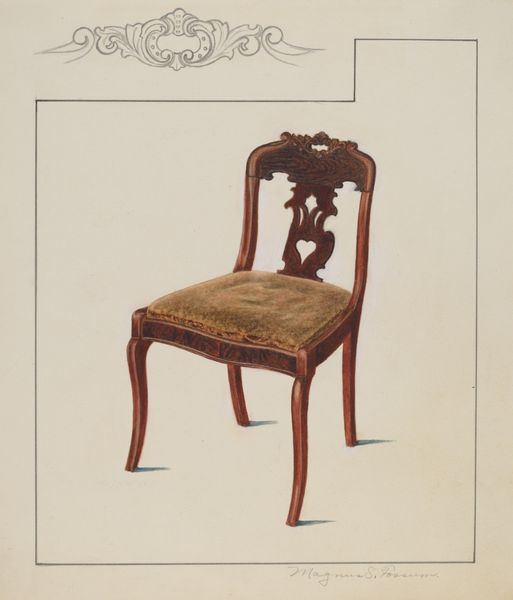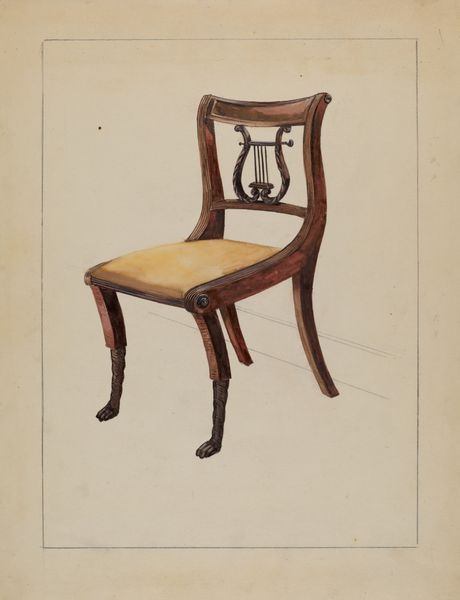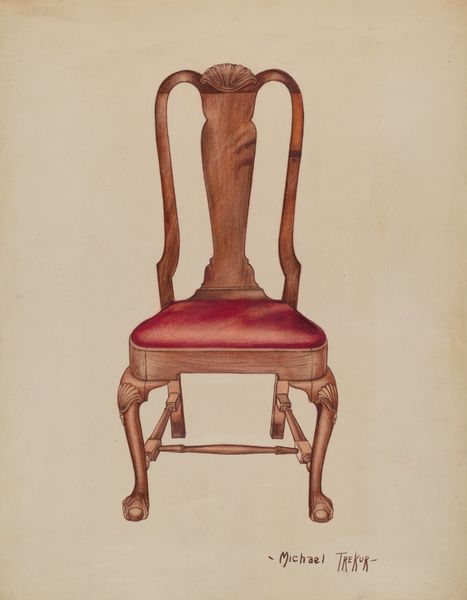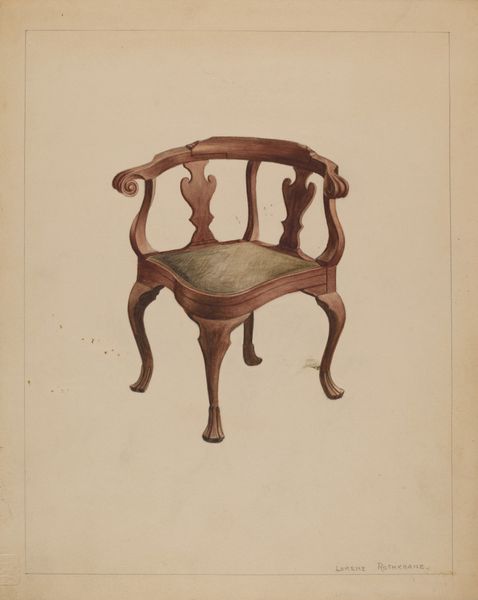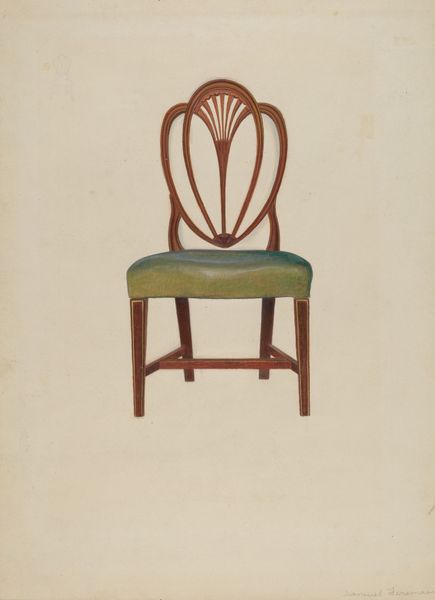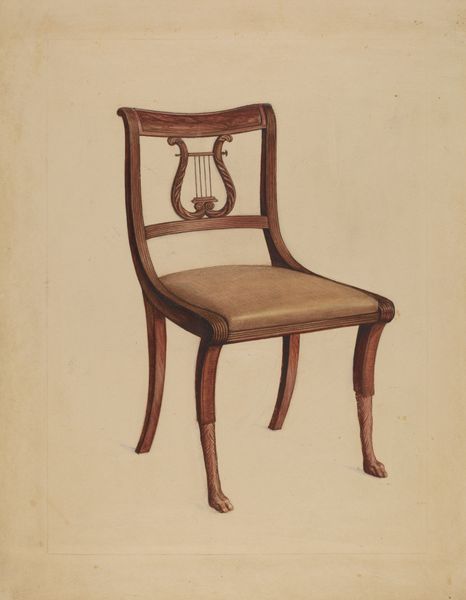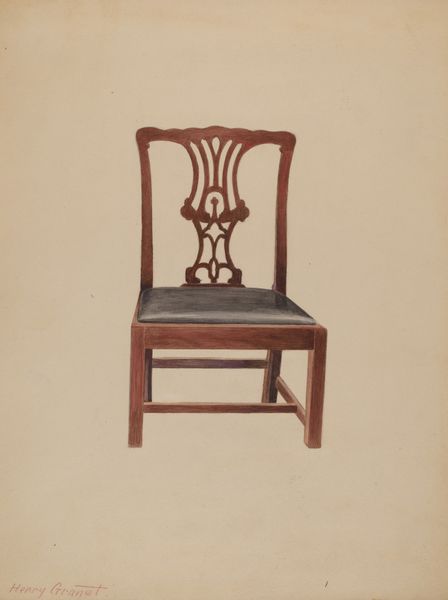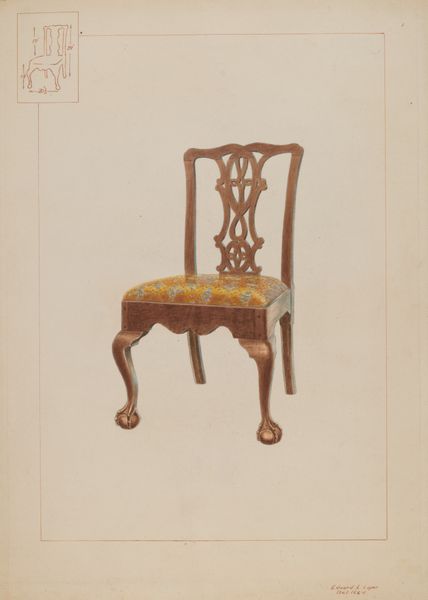
drawing, watercolor
#
drawing
#
watercolor
#
pencil drawing
#
decorative-art
Dimensions: overall: 28.9 x 22.7 cm (11 3/8 x 8 15/16 in.) Original IAD Object: 32 7/8"high, 17 3/4"wide, 13 1/2" deep
Copyright: National Gallery of Art: CC0 1.0
Curator: This watercolor and pencil drawing by Edith Magnette, created around 1937, is titled "Fiddle-back Chair". What catches your eye first? Editor: It's undeniably elegant, isn't it? But there's also something almost melancholy about the muted palette and the stillness of the composition. It feels less like a celebration of design and more like a quiet observation. Curator: That's fascinating. Magnette was working during a period of great social and political upheaval. We might consider this chair, not simply as a decorative object, but as a symbol of domesticity, perhaps even bourgeois complacency, amidst a world in turmoil. Its stillness might reflect the interior lives of women at this moment, caught between tradition and rapid social change. Editor: That connects with how I initially experienced its quietness. The decorative-art style hints at tradition, but is it a comfortable tradition? How accessible was this elegance, and for whom was it produced? Are there any archives with notes from Magnette, or related objects we could look at? Curator: Those are critical questions, indeed! Her other known pieces offer further hints: depictions of objects relating to wealth and interior space recur, though with this sombre coloration and restrained composition. Looking into her background is vital to more clearly address how the work situates or subverts traditional approaches. The materials themselves - watercolour and pencil - also imply a delicate intimacy rather than overt grandeur. Editor: And is the object isolated against the bare paper like this by choice, or necessity? Because while this object *can* stand for luxury, the drawing looks austere. And as we uncover these nuances, it also underscores the significance of supporting archival research on female artists in periods of cultural transition like this one. The simple image really sparks those vital interrogations. Curator: Absolutely! We're constantly rewriting our understanding of these cultural periods and artistic voices. Everyday objects can open entire narratives for cultural expression, not in a straightforward fashion but from a perspective still wrestling for inclusion and representation. It gives new perspectives to our institutional roles.
Comments
No comments
Be the first to comment and join the conversation on the ultimate creative platform.

